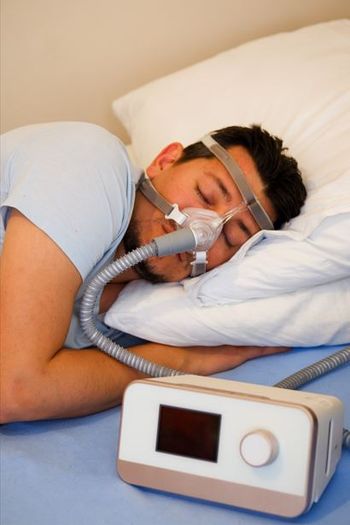
ASA: Physical Activity Safe Within 24 Hours of Stroke
SAN FRANCISCO, Feb. 9 -- Getting selected patients out of bed and moving in the first 24 hours after a stroke appears to be safe, Australian researchers said here.
SAN FRANCISCO, Feb. 9 -- Getting selected patients out of bed and moving in the first 24 hours after a stroke appears to be safe, Australian researchers said here.
Patients who participated in assisted physical activity in the first 24 hours after a stroke had no significant mortality excess, serious adverse events, severe falls, or inability to mobilize because of rapid blood pressure drops, said Julie Bernhardt, Ph.D., of the National Stroke Research Institute in Melbourne. She and colleagues presented the phase II trial results at the American Stroke Association meeting.
"Surprisingly, this type of intervention has not been tested before in high quality trials," Dr. Bernhardt said. "In the past, people believed that patients could not exercise immediately after having a stroke or that it might be dangerous."
The multicenter, single-blind controlled trial included 71 patients from two stroke units randomized to r early exercise therapy or usual care after hospitalization for confirmed stroke.
The mean age was 74.7 and 54% were male. Most had ischemic stroke (87%). At admission, 58% had a stroke severity of seven or more on the National Institutes of Health Stroke Scale. Patients were selected for physiological parameters. Those with preexisting severe disability, severe co-morbidities or requiring palliative care were excluded.
In the study, exercise therapy essentially consisted of getting out of bed, standing, and walking as many times a day as possible with assistance from a nurse or physical therapist, and rest in between. This was continued daily until discharge or to day 14 of hospitalization.
Previous studies by the researchers showed that usual post-stroke care in Australia typically includes either bed rest for the first few days or being helped once a day to get out of bed.
In the U.S., patients usually start with some form of mobilization in the first day or two and move within several days to more comprehensive rehabilitation, depending on the severity of the stroke, said Harold P. Adams, M.D., of the University of Iowa in Iowa City, who commented as an American Heart Association spokesperson.
However, the intervention used in the Australian study was "unique and exciting" in that it moves the first stages of rehabilitation efforts even earlier, said Margaret Kelly-Hayes, Ed.D., R.N., of Boston University, who moderated a press conference discussing it.
"Mechanisms to encourage recovery using very early mobilization are an important new step to look at to hopefully make a difference in disability and survival," she said.
Comparing the intervention to the control group, the findings were:
- A 12% higher mortality rate though this was not significant (eight of 38 versus three of 33, 95% confidence interval -4% to 28%, P=0.16).
- No severe falls in either group.
- No failures to mobilize due to postural blood pressure drop.
- Serious adverse event counts were similar between groups (23 versus 17).
The researchers said their strategy was feasible because the early mobilization group had a higher total "dose" of exercise compared with the standard care group (255.6 versus 125.4 minutes, P=0.011). The study arm also had an earlier time to first mobilization post-stroke (18.5 versus 30.8 hours, P
Newsletter
Enhance your clinical practice with the Patient Care newsletter, offering the latest evidence-based guidelines, diagnostic insights, and treatment strategies for primary care physicians.




























































































































































































































































































